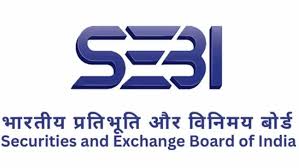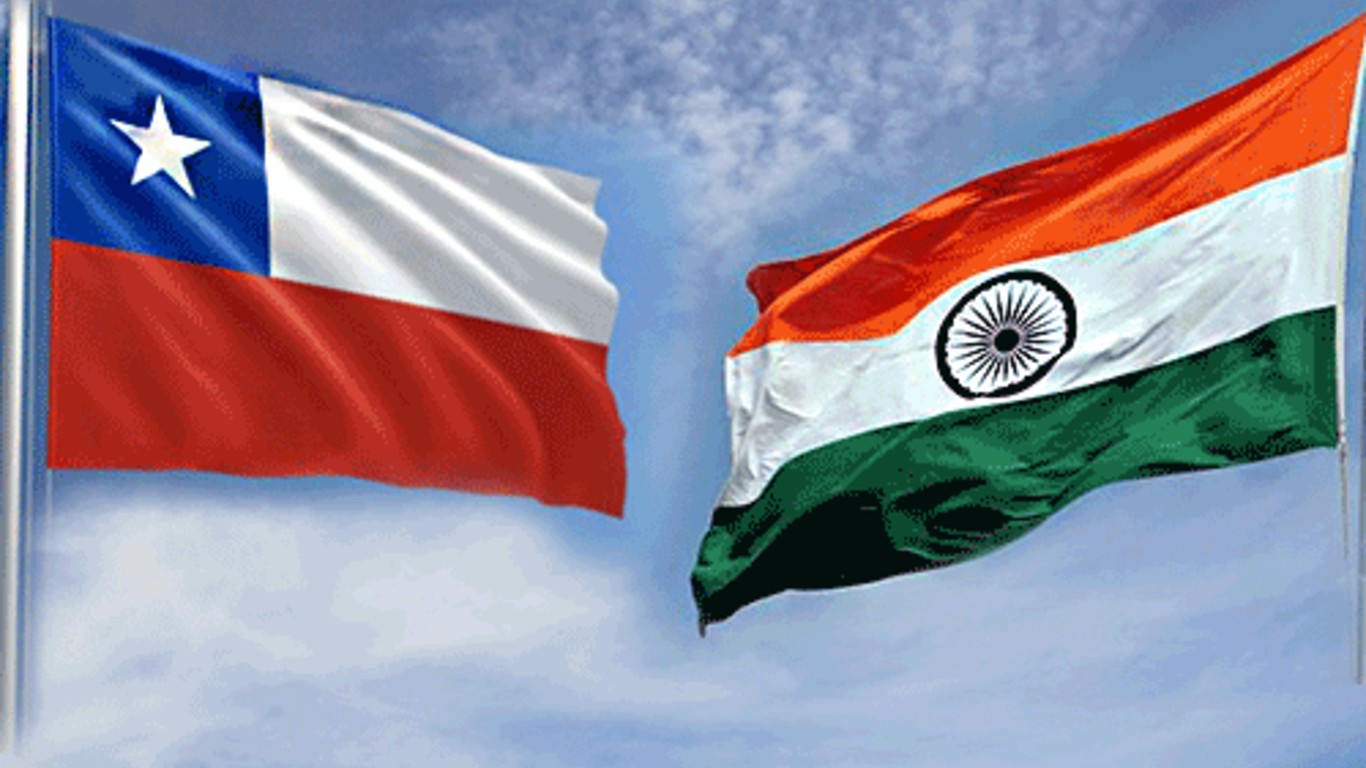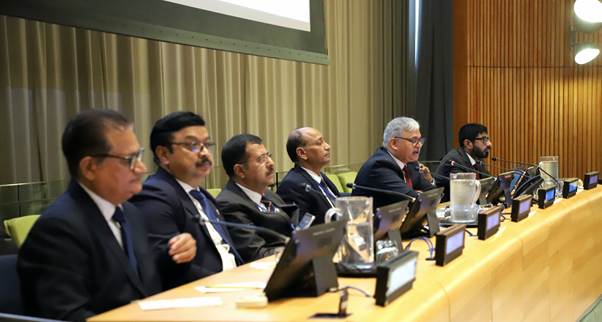NiveshakShivir

- 13 May 2025
In News:
In May 2025, the Investor Education and Protection Fund Authority (IEPFA), under the Ministry of Corporate Affairs, in collaboration with the Securities and Exchange Board of India (SEBI), convened a strategic preparatory meeting at SEBI’s Mumbai office to launch the “NiveshakShivir” initiative. This nationwide investor outreach program aims to facilitate the reclamation of unclaimed dividends and shares by investors across India.
Key Features of “NiveshakShivir”
- Investor Helpdesks: Physical helpdesks will be set up to enable investors to interact directly with company representatives and Registrars and Transfer Agents (RTAs) for end-to-end assistance in recovering unclaimed assets.
- Digital Search Facility: IEPFA provides an online portal (https://iepfa.gov.in/login) where shareholders can check if their shares have been transferred to the IEPF and file claims using Form IEPF-5.
- Streamlined Process: Clear guidance is provided for shareholders holding shares in dematerialized or physical form to verify and reclaim their unclaimed dividends and shares efficiently.
- Coverage: The initiative is set to launch first in Mumbai and Ahmedabad, with plans to expand to other cities with high volumes of unclaimed investor assets.
Actions for Shareholders
- Demat Shareholders: Are encouraged to directly contact respective companies for clarification regarding shares liable for transfer to IEPFA.
- Physical Shareholders: Should verify share status on the IEPFA website and claim refunds if shares have been transferred.
- The initiative reduces dependence on intermediaries and improves transparency and efficiency in the recovery process.
About the Investor Education and Protection Fund Authority (IEPFA)
- Legal Basis: Established under Section 125 of the Companies Act, 2013.
- Function: Operates under the Ministry of Corporate Affairs to protect investor interests, promote financial literacy, and manage the corpus of unclaimed dividends, matured deposits, and shares transferred by companies.
- Objective: To foster a transparent, investor-friendly financial ecosystem through outreach and education programs like “NiveshakShivir.”
India and Chile Sign Terms of Reference for CEPA Negotiations

- 13 May 2025
In News:
Recently, India and Chile signed the Terms of Reference (ToR) to initiate negotiations for a Comprehensive Economic Partnership Agreement (CEPA), marking a significant step toward deepening bilateral economic ties.
Background and Significance
- The CEPA aims to expand and build upon the existing Preferential Trade Agreement (PTA) between the two countries by covering a broader range of sectors including digital services, investment promotion, MSMEs, and critical minerals.
- India and Chile share warm, strategic bilateral relations strengthened over years through high-level exchanges. The economic partnership began with a Framework Agreement in 2005, followed by a PTA in 2006, an expanded PTA effective from 2017, and further discussions towards CEPA since 2019.
- A Joint Study Group report finalized in April 2024 laid the foundation for advancing to a CEPA to unlock the full trade and investment potential between the two nations.
- The recent State visit of Chile’s President Gabriel Boric Font to India in April 2025 reaffirmed both countries’ commitment to enhancing trade frameworks and fostering a balanced, ambitious, and mutually beneficial economic agreement.
About Chile: Geopolitical and Economic Profile
- Chile is a long, narrow South American country bordered by Peru and Bolivia to the north, Argentina to the east, and the Pacific Ocean to the west.
- It shares the longest border in South America with Argentina, which is also the third-longest international border worldwide.
- Key geographical features include the Andes Mountains (the world’s longest continental mountain range), the Atacama Desert (driest non-polar desert globally), the Loa River (Chile’s longest river, approx. 440 km), and Ojos del Salado volcano (world’s highest active volcano at 6,880 meters).
- Situated on the Pacific Ring of Fire, Chile is prone to frequent earthquakes and tsunamis.
- Chile is the world’s largest producer of copper and a significant member of the “Lithium Triangle” (alongside Argentina and Bolivia), holding over 75% of global lithium reserves found in salt flats.
- Other important resources include molybdenum, iron ore, timber, hydropower, and precious metals.
Importance for India
- The CEPA negotiations with Chile are expected to enhance trade and investment flows, promote MSMEs, and strengthen cooperation in critical sectors such as minerals and digital services.
- This move aligns with India’s broader strategy to diversify economic partnerships globally and deepen ties with Latin American countries.
- Enhanced economic integration with Chile will boost employment, trade balance, and strategic cooperation between the two nations.
Arnala

- 13 May 2025
In News:
Recently, the Indian Navy received Arnala, the first of eight indigenously designed and built Anti-Submarine Warfare Shallow Water Crafts (ASW SWCs). The vessel was constructed by Garden Reach Shipbuilders and Engineers (GRSE), Kolkata, in partnership with M/s L&T Shipyard, Kattupalli, under a Public-Private Partnership (PPP), exemplifying the growing collaboration in India’s defence manufacturing sector.
Key Features and Significance
- Arnala is named after the historic Arnala Fort located off Vasai, Maharashtra, symbolizing India’s rich maritime heritage.
- The ship measures 77 metres in length and is the largest Indian Naval warship powered by a Diesel Engine-Waterjet propulsion system.
- Designed and built according to the Indian Register of Shipping (IRS) classification rules, the vessel adheres to domestic naval architecture standards.
- Over 80% of the ship’s components are sourced indigenously, marking a significant stride toward the Government’s vision of ‘Aatmanirbhar Bharat’ in defence production.
Operational Roles
The Arnala class ASW SWCs are specialized for:
- Underwater surveillance in coastal and littoral zones
- Conducting search and rescue (SAR) operations
- Engaging in Low Intensity Maritime Operations (LIMO)
- Performing coastal Anti-Submarine Warfare (ASW) missions
- Advanced mine-laying activities
The induction of these vessels enhances India’s capabilities in shallow water ASW, critical for safeguarding maritime security in near-shore environments and ensuring dominance in the strategically vital littoral areas.
Strategic Importance
The delivery of Arnala signifies a major milestone in the Indian Navy’s ongoing efforts to promote indigenous shipbuilding and strengthen domestic defence manufacturing. It highlights successful public-private collaboration in advanced warship construction and contributes directly to India’s broader strategic goal of self-reliance in defence technology.
ALICE Experiment
- 13 May 2025
In News:
The ALICE collaboration at CERN’s Large Hadron Collider (LHC) has experimentally observed the conversion of lead nuclei into gold nuclei through a rare nuclear transmutation process. This discovery, reported in Physical Review C, marks the first systematic detection of gold production via electromagnetic dissociation at the LHC.
Historical Context: The Dream of Chrysopoeia
The idea of turning lead, a common base metal, into gold—a precious metal—dates back to medieval alchemy and is known as chrysopoeia. Alchemists were motivated by the similarity in density between lead and gold, but modern chemistry has established that chemical reactions cannot change one element into another since elements differ by their number of protons.
With the advent of nuclear physics in the 20th century, scientists learned that nuclear reactions could transmute elements, either naturally (radioactive decay) or artificially (particle accelerators). However, the ALICE experiment at CERN has revealed a novel mechanism of such transmutation involving near-miss collisions of lead nuclei.
Mechanism of Transmutation at the LHC
The LHC, located on the Franco-Swiss border near Geneva, is the world’s largest and most powerful particle accelerator. It accelerates two beams of lead nuclei (each containing 82 protons) to velocities close to the speed of light (about 99.999993% of the speed of light) inside a 27-kilometre ring.
During ultra-peripheral or near-miss collisions, lead nuclei pass close by each other without direct contact. The intense electromagnetic fields generated by the 82 protons in each lead nucleus compress into a short-lived pulse of photons, producing a process called electromagnetic dissociation.
This photon-induced excitation causes the nucleus to oscillate internally and emit a small number of protons and neutrons. When a lead nucleus (Pb-208) ejects three protons and two neutrons, it effectively becomes a gold nucleus (Au-203).
Role of ALICE Detector and Zero Degree Calorimeters (ZDCs)
The ALICE detector uses Zero Degree Calorimeters (ZDCs) to detect and count these nuclear dissociation events by measuring the number of emitted protons and neutrons. The emission of zero, one, two, or three protons corresponds to the creation of lead, thallium, mercury, and gold nuclei, respectively.
This capability allows ALICE to distinguish rare electromagnetic transmutations from the usual high-energy head-on collisions producing thousands of particles.
Key Findings and Quantitative Data
- The LHC produces gold nuclei at a rate of about 89,000 nuclei per second during lead–lead collisions.
- During LHC Run 2 (2015–2018), approximately 86 billion gold nuclei were generated.
- This corresponds to a mass of only 29 picograms (2.9 × 10?¹¹ grams), far too little for any practical use like jewelry.
- Run 3, with increased luminosity, has nearly doubled the amount of gold produced.
- The gold nuclei exist only for a fraction of a second before fragmenting into protons, neutrons, and other particles upon hitting the LHC’s beam pipe or collimators.
Significance
This discovery:
- Demonstrates a new pathway for nuclear transmutation via electromagnetic interactions at ultra-relativistic speeds.
- Provides experimental data that helps refine theoretical models of electromagnetic dissociation.
- Aids in understanding and predicting beam losses, which are critical for improving the performance of the LHC and future particle colliders.
About CERN and the LHC
- CERN (European Organisation for Nuclear Research), established in 1954, is Europe’s premier high-energy physics research organization with 23 member states and 10 associate members (including India).
- The LHC accelerates particles to nearly light speed in a 27-km circular tunnel under the Franco-Swiss border, facilitating collisions studied by four major experiments: ALICE, ATLAS, CMS, and LHCb.
- These experiments aim to probe fundamental particles and forces, test the Standard Model of particle physics, and explore conditions of the early universe.
20th Session of the United Nations Forum on Forests (UNFF20)

- 13 May 2025
In News:
India actively participated in the 20th session of the United Nations Forum on Forests (UNFF20) held from May 5 to 9, 2025, at the United Nations Headquarters, New York. UNFF, established in 2000 by the UN Economic and Social Council (ECOSOC), is the sole intergovernmental platform dedicated to global forest policy dialogue and coordination, aiming to promote sustainable forest management (SFM) and strengthen political commitment worldwide.
Key Objectives and Functions of UNFF
- Promotes conservation, management, and sustainable development of all forest types.
- Supports the implementation of Agenda 21, Rio Forest Principles, and the UN Strategic Plan for Forests 2017–2030.
- Oversees six voluntary Global Forest Goals (GFGs) and 26 targets, including reversing deforestation and enhancing forest governance.
- Facilitates cooperation through technical exchanges, policy development, financing mechanisms like the Global Forest Financing Facilitation Network, and advocacy linking forests with climate, biodiversity, and sustainable development.
India’s Highlights at UNFF20
India reaffirmed its commitment to the Voluntary National Contributions (VNCs) under the UN Strategic Plan for Forests 2017–2030, reporting progress in increasing its forest and tree cover, which now constitutes 25.17% of the country’s geographical area, as per the latest India State of Forest Report. Major achievements include:
- Restoration efforts under the Aravalli Green Wall project.
- A 7.86% increase in mangrove cover over the past decade.
- Afforestation of over 1.55 lakh hectares through the Green India Mission.
- Plantation of 1.4 billion seedlings under the “Ek Ped MaaKe Naam” (Plant4Mother) campaign.
Global Contributions and Initiatives
India extended an invitation to all UN member states to join the International Big Cat Alliance (IBCA)—a global platform launched by India to conserve seven big cat species through collaborative research, knowledge exchange, and capacity-building.
India also emphasized the importance of incorporating the outcomes of the Country-Led Initiative (CLI) on forest fire management and forest certification—hosted by India in Dehradun in October 2023—into formal global mechanisms. It acknowledged contributions from other countries such as the Republic of Congo, Democratic People’s Republic of Korea, and Austria in this initiative.
Policy and Technical Engagements
India hosted a side event titled “Restoring Degraded Forest Landscapes: India’s Approach to Sustainable Forest Management and Climate Resilience”, showcasing integrated forest restoration strategies combining policy innovation, resource convergence, community participation, and technology.
In a high-level panel on “Valuing Forest Ecosystems in National Policy and Strategy,” India shared pilot study findings from Uttarakhand, Rajasthan, and tiger reserves that quantified ecosystem services like carbon sequestration, water provisioning, and biodiversity conservation. India stressed the need to incorporate ecosystem valuation into national planning to enhance forest governance and ecological sustainability.
Significance of UNFF20
The session focused on advancing three Global Forest Goals:
- Reversing forest cover loss.
- Increasing protected and sustainably managed forests.
- Promoting forest governance and legal frameworks.
UNFF20 aimed to strengthen global dialogue following the 2024 midterm review of the international arrangement on forests and set the agenda for future policy deliberations in 2026. It underscored the critical role forests play in climate resilience, biodiversity, livelihoods, and sustainable development.
